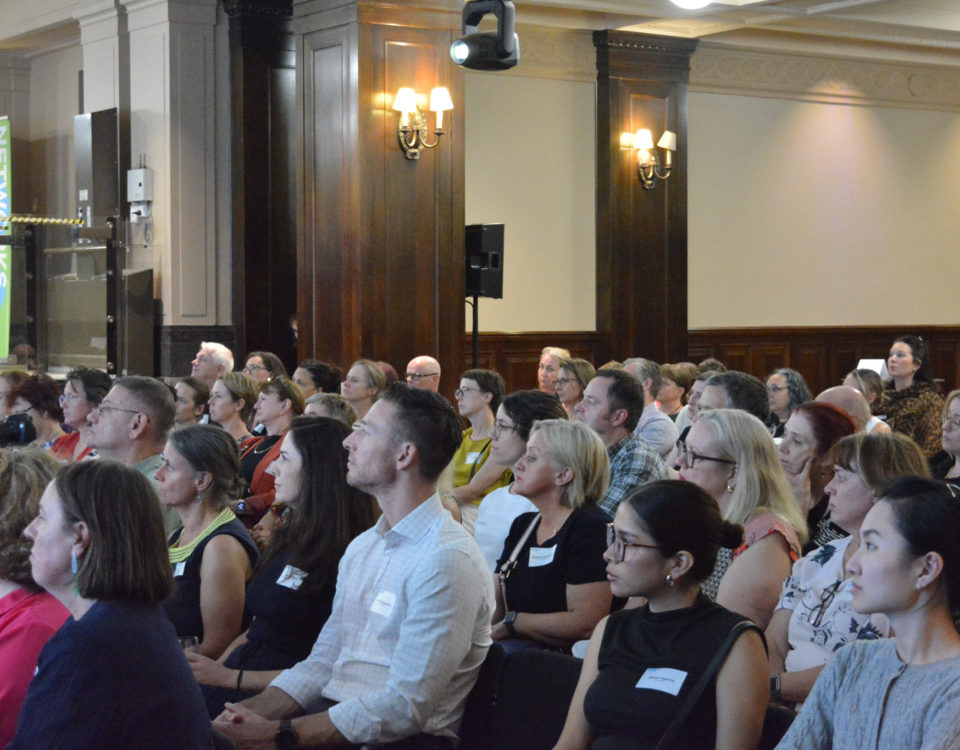
How Accomplished Leaders Can Continue to Contribute Beyond Their Full-Time Career
02/04/2025
Bridging Now to Next: National Reconciliation Week 2025
27/05/2025Imposter syndrome is more common in leadership than we often admit. It doesn’t matter how seasoned or successful we are, those nagging feelings of “I’m not enough” can still creep in. Besides self-doubt, there’s also the fear of being found out—the worry that someone will see behind our polished exterior and question our worth.
These feelings can be isolating, especially in leadership roles where team members expect us to have all the answers. But the truth is, many leaders share this experience – and most of us simply don’t talk about it.
At Leadership Victoria, we believe that imposter syndrome is not a weakness to suppress but a leadership reality to acknowledge and navigate. On Thursday, 20 March 2025, we invited a panel of Williamson Community Leadership Program (WCLP) Alumni to explore how imposter syndrome shows up in leadership. Lucy Duncan (WCLP ’22), Director of Learning & Development for Kenvue (formally Johnson & Johnson), Ross Connor (WCLP ’23), Director, Department of Transport, and Divya Pasupuleti (WCLP ’24) Executive Manager, NBN, offered invaluable insights to help leaders identify their own challenges with imposter syndrome and the way it shapes our perception of self-worth and how we can reframe it as a tool for growth rather than a barrier to success.
Self-doubt can creep into leadership in many ways, including systemic and structural challenges and rapid career progression, affecting confidence and decision-making. When faced with thoughts of self-doubt, Lucy Duncan often found herself asking: “How do they impact you at work, at play, in the space that these feelings show up? And how do they impact you as a leader and impact those around you?”, recognising imposter syndrome is the first step to managing it.
For Divya Pasupuleti, it evolved over time: <em>“Currently, imposter syndrome sits quite differently with me. It is showing up as a symptom of representation, belonging, and inclusion. I often look around myself, and when I see no people like me around me, I wonder if I deserve to be there.”
For Ross Connor, imposter syndrome first emerged when he was suddenly promoted into his first leadership role: “I remember my internal voice being stunned into silence—just nerves and wondering whether I was doing the right thing”. His doubts intensified when he was made redundant a year later, reinforcing the fear that he hadn’t truly earned his position. “See? You weren’t good enough,” his inner voice told him. But, years later, he reframed those experiences as critical moments of growth.
Reframing Imposter Syndrome: Shifting to Self-Acceptance
While imposter syndrome can be challenging, reframing it as an opportunity for growth is a powerful way to move forward. Instead of focusing on what you don’t know, Ross Connor suggests shifting the perspective to “not what you know, but who you are—your core values” and highlights that feelings of imposter syndrome “represent an opportunity for growth. They represent the fact that you are stepping outside your comfort zone and pushing yourself.”
Divya also highlighted the importance of perspective, and “putting the problem in context with everything else happening around you”. By recontextualising the root cause, she reached a satisfying state: “through professional development, mentoring, and understanding my strengths and values, I identified my unique value proposition.”
Leadership Strategies for Managing Imposter Syndrome
By embracing self-awareness and reframing self-doubt, leaders can not only navigate imposter syndrome but also foster a leadership style grounded in empathy, respect, and curiosity. Here are some of the strategies our panelists shared:
- Step onto the balcony: A concept from the adaptive model of leadership, this technique encourages leaders to pause and assess their situation from a broader perspective. “Observe yourself from the balcony. What’s going on there? Why are you feeling like that?” Ross advised. By creating distance from immediate emotions, leaders can observe their thoughts and create space for a more measured response and respond with clarity rather than fear.
- Seek feedback: Many leaders focus on criticism while dismissing positive feedback. “There’s always a disconnect between the story I tell myself, the story I hear, and what I believe,” Divya noted. Actively seeking and internalising constructive feedback helps counter self-doubt with concrete evidence.
- Normalise self-doubt in leadership. Imposter syndrome thrives in silence. By openly sharing experiences, leaders create an environment where self-doubt is recognised as a normal, if not essential, part of leadership growth.
At Leadership Victoria, we are committed to helping leaders transform self-doubt into empowerment. Our programs are designed to nurture your growth and support you every step of your leadership journey toward more authentic and effective leadership. Engage with us to explore our comprehensive offerings and begin your journey toward realising your fullest potential.




